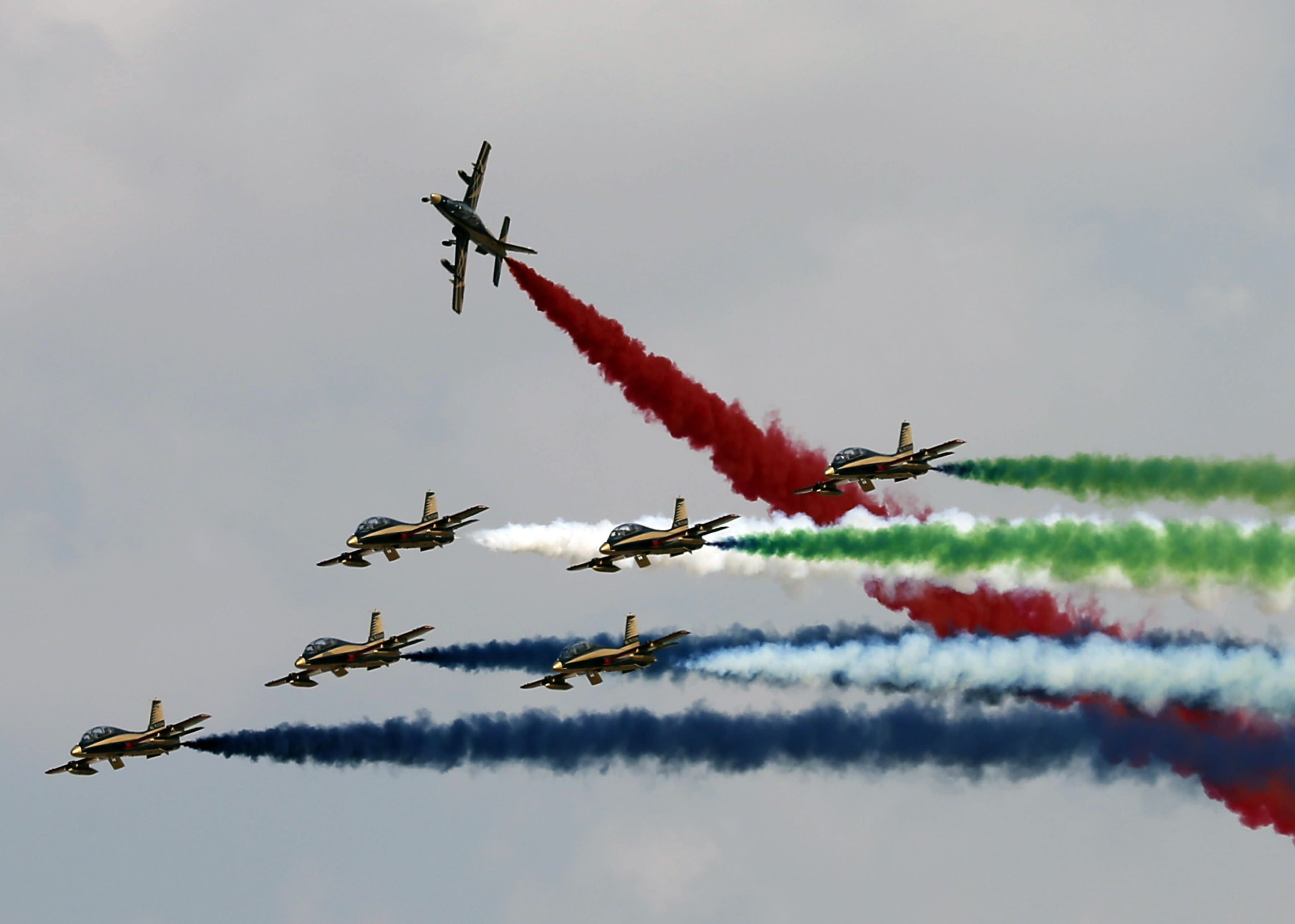DUBAI, United Arab Emirates — Dubai’s last international air show, in November of 2019, feels like another era.
Just a few months before the Covid-19 pandemic turned travel upside down, the highly-attended biennial aviation event celebrated an industry that looks very different today.
But nearly two years after the travel and airline industries came to a near standstill, the market is picking up again.
The 2021 Dubai Air Show kicks off on Sunday, November 14. Here’s what to expect:
Travel industry recovery?
Things have been looking up for travel with the continued successful rollout of vaccination campaigns and easing of governments’ Covid restrictions.
“Executives are cautiously optimistic about the future,” aviation analysts at consultancy Accenture wrote in a note ahead of the show.
The firm predicts 13% growth year-on-year in 2022 for commercial aerospace globally, though the year will still be 4% below 2019 levels.
Dubai flagship carrier Emirates Airline — the Middle East’s largest airline and biggest aircraft buyer — has enjoyed some of that recovery itself, narrowing its previous losses with a 86% surge in revenue for its half-year earnings for the 2021-2022 financial year.
Still, worries about potential new Covid variants, inflation and rising energy prices leave a significant amount of uncertainty for the industry. Dubai’s show is sure to see plenty of discussions on industry recovery, as well as ways that aviation has become safer and more hygienic due to the pandemic.
Due in part to that uncertainty and also because Dubai hosts a smaller air show than the Paris or Farnborough events, analysts don’t expect to see many major orders this year. It’s also because the order books for Gulf carriers “tend to be more widebody focused,” said Sheila Kahyaoglu, aerospace and defense analyst at Jefferies. “So I think that given international traffic is slower, I just don’t think that will be a catalyst for more orders.”
Supply chain issues
The global supply chain crunch has impacted many sectors, and aerospace has been no exception.
Within aviation, supply chain shortages are mostly hitting the defense space, Kahyaoglu said. “In communications systems, ships, semiconductor parts — just wherever it’s hitting the rest of the world.”
In the business jet segment, there is less of an impact as fewer private jets are manufactured per year than other types of aircraft, but it still “creates a bit of a shortage on parts, so OEMs [original equipment manufacturers] have to be cognizant of their material purchases,” Kahyaoglu said.
More than half of aerospace executives — 55% — “expressed lower confidence in their supply chain timeliness and quality over the next six months,” according to Accenture.
Cargo winning
Only one air traffic segment has gone above 2019 levels, and that’s cargo.
People may have stopped traveling for a long period, but e-commerce and the movement of products has continued to grow. Before the pandemic, a significant volume of cargo was transported in the belly of passenger planes. But after those planes went offline as travel restrictions went up, says Richard Aboulafia, vice president of analysis at Teal Group, “all of a sudden people said, ‘Hey, we need dedicated cargo jets because that belly cargo isn’t available.'”
Expect to see Airbus and Boeing — the world’s two largest aerospace companies by revenue — display new large freighter versions of existing aircraft, Aboulafia said.
“You’ll see Airbus talk about, maybe even launch, a freighter version of the A350 XWB jetliner,” he told CNBC.
“And you might see exactly the same thing from Boeing with the freighter version of the 777X, the latest version of the 777, which has composite wings and such. That’ll be really interesting to watch because the Gulf is a pretty big large cargo market.”
Indeed, in Emirates Airline’s latest half-year earnings, cargo operations were robust, seeing a 39% increase and bringing the business to 90% of the volume it had in 2019.
Military sales
In terms of defense, eyes will still be on whether the sale of the Lockheed Martin F-35 II Joint Strike fighter jet to the UAE, penned in the final day of the Trump administration, will see any progress. The mammoth $23 billion sale, comprised primarily of 50 F-35 jets and at least 18 armed drones, is reportedly still being negotiated between Washington and Abu Dhabi.
Previously, U.S. laws and export regulations prevented it from selling lethal drones or the F-35 to any of its Arab allies. But changes implemented by the Trump administration have made this possible, meaning that if it’s completed, it would be the first sale of the F-35 and U.S.-made armed drones to any Arab country.
There is also a “general trend toward continued modernization of fighter fleets, mostly modernized fourth-generation platforms,” said Justin Bronk, research fellow for airpower and technology at the Royal United Services Institute in London.
Fourth-generation broadly refers to fighter jets in service from the 1980s until now, with multi-combat roles and more advanced technology than its predecessors, like infrared search and track capabilities and digital avionics.
